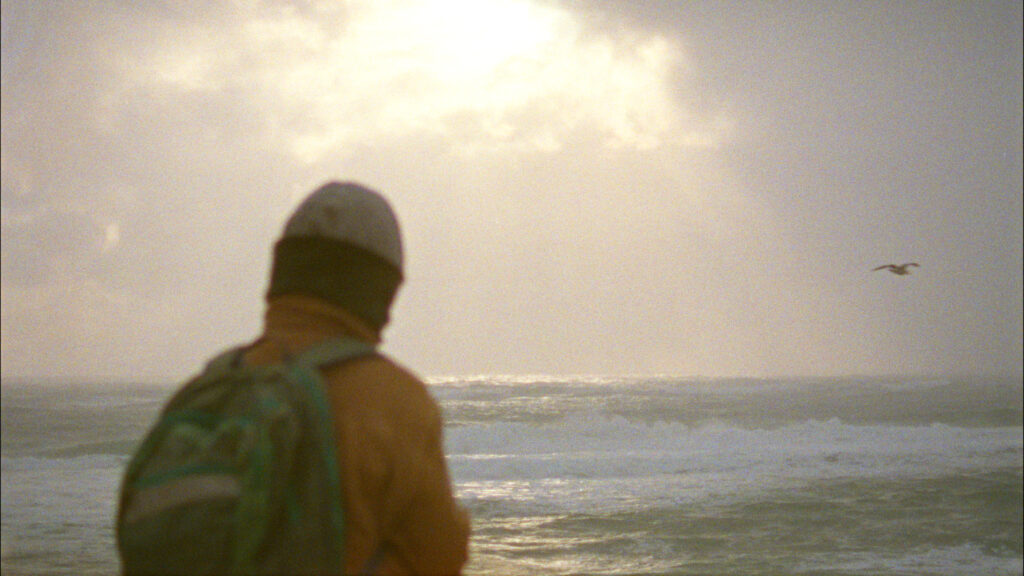Jacquelyn Mills is an award-winning filmmaker from Cape Breton Island and based in Montreal. Her film “In the Waves” premiered at Visions du Réel and was theatrically released at TIFF’s Cinematheque. Mills has worked as editor, sound designer, and cinematographer for the National Film Board of Canada as well as other internationally acclaimed films.
“Geographies of Solitude” is screening at the 2022 Hot Docs Canadian International Film Festival, which is taking place April 28-May 8. Find more information on the fest’s website.
W&H: Describe the film for us in your own words.
JM: “Geographies of Solitude” is an immersion into the rich ecosystem of Sable Island and the life of Zoe Lucas, a naturalist and environmentalist who has lived over 40 years on this remote sliver of land in the Northwest Atlantic Ocean.
W&H: What drew you to this story?
JM: This film began when I was four years old, watching the news with my grandmother. There was a story of a woman who lived and worked on a remote island in the Northwest Atlantic. Sable Island was described as a crescent-shaped strip of sand, home to seals, wild horses, and shipwrecks.
This legend stayed with me and 30 years later I met Zoe Lucas. It was the mythology that brought me to her and the island, but it was everything else that captivated me and led to the making of this film.
W&H: What do you want people to think about after they watch the film?
JM: This film explores one woman’s lifelong dedication to protecting our natural world. I don’t know what the solution is to our environmental crisis, but it breaks my heart that the world is in the state it’s in environmentally.
If we can experience what is sacred in nature, and the wonder of the natural world, I believe we would have “less taste for destruction,” as Rachel Carson would say. That’s why I made this film — to work with our current reality. Can we honor places? Can that inspire us to treat them with reverence?
W&H: What was the biggest challenge in making the film?
JM: The physical demands of traversing the island by foot with heavy film gear is worth noting. I filmed in conditions of blowing snow and sand, in winds, fog, and rain. I didn’t put pressure on myself to move fast.
Because I was shooting on 16mm, I could only capture 10 minutes a day. In that way, I was able to fully experience the realities of the island before filming, which were so rich they paled any challenges I encountered.
W&H: How did you get your film funded? Share some insights into how you got the film made.
JM: This film was funded with Sundance Documentary Fund, Canada Council for the Arts, and Conseil des arts et des lettres du Québec.
W&H: What inspired you to become a filmmaker?
JM: It is the combination of many art forms in cinema that first drew me to the medium. The capturing of images, painting with light and shadow, sculpting through montage, exploring methods of storytelling through expressive soundscapes. These elements coming together in a cinematic expression creates a unique alchemy, a transportation into an alternate emotional experience.
Documentary film in particular allows for an immediate response to the spontaneous, startling realities of the moment — realities that convey the fragile nature of existence. In this way, cinema is a tool to explore the complexity and wonder of human consciousness.
W&H: What’s the best and worst advice you’ve received?
JM: An advice I still refer to is something my dad told me: Most people give up at the last 10 percent.
W&H: What advice do you have for other women directors?
JM: Don’t give up at the last 10 percent.
W&H: Name your favorite woman-directed film and why.
JM: I love all of Sofia Bohdanowicz’s films; she is a fierce artist with an impressive body of work. I admire her talent and vision very much.
W&H: How are you adjusting to life during the COVID-19 pandemic? Are you keeping creative, and if so, how?
JM: The beginning of the pandemic aligned with the edit stage of this film. In that way, it allowed me to thoughtfully complete the film at a slow pace.
W&H: The film industry has a long history of underrepresenting people of color onscreen and behind the scenes and reinforcing — and creating — negative stereotypes. What actions do you think need to be taken to make Hollywood and/or the doc world more inclusive?
JM: It is important to ask ourselves how to be inclusive, responsible, conscious participants in the world — through film and otherwise. We have to start somewhere and hopefully, eventually, it will become very natural to create artist works with and including the broadest spectrum of human experiences.







